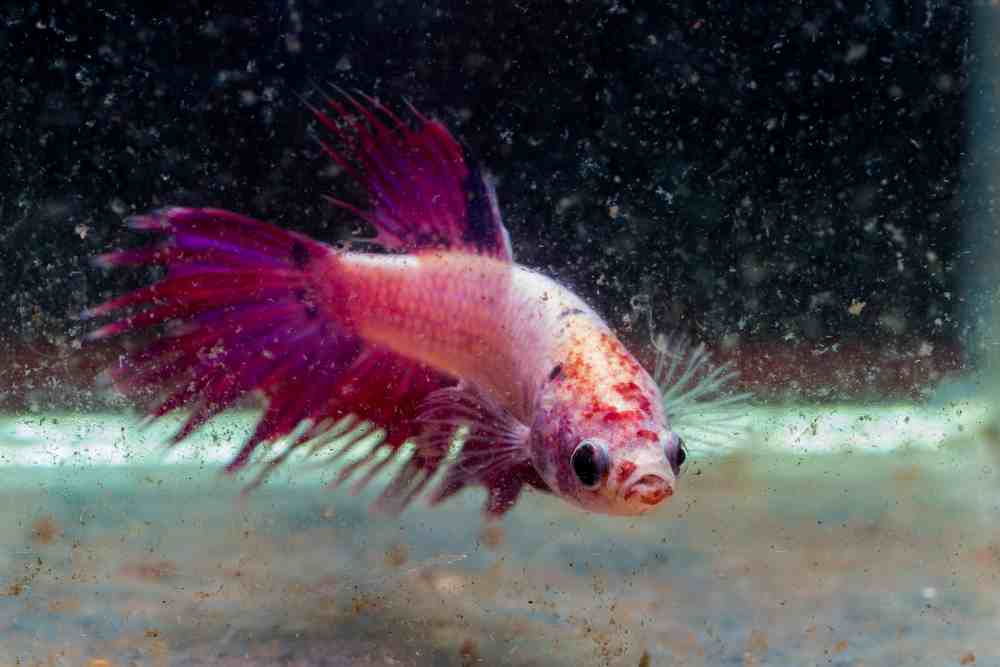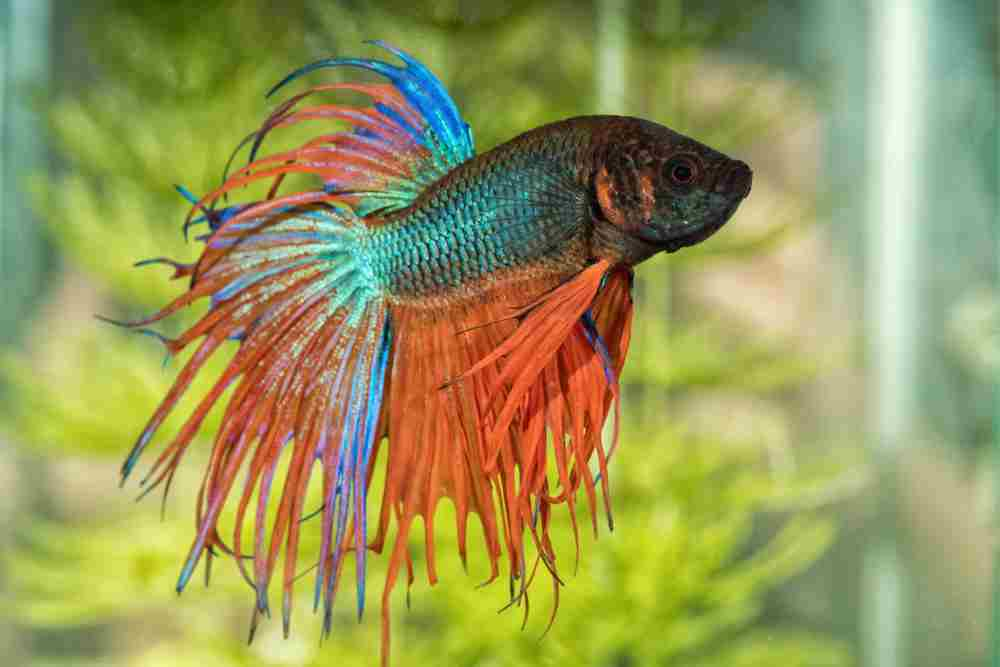Did you know that even fish can get injured? It’s true, injury in aquarium fish is a fascinating and often overlooked topic.
From common mishaps like fin damage to more serious conditions like swim bladder disorders, the underwater world of our beloved pets is not always as serene as it seems.
In this article, we’ll dive deep into the various types of injuries that can occur in aquarium fish, explore effective prevention strategies, and discuss the best ways to treat these ailments.

What is Fish Injury?
Fish injury refers to physical harm or damage inflicted upon fish. While we usually associate injuries with mammals, it is important to acknowledge that fish are also susceptible to wounds and trauma.
These injuries can occur in various ways, such as through predation, fishing activities, or collisions with objects in their environment.
Unlike animals with fur or feathers, fish have a delicate skin that lacks any protective covering; hence, even a minor scratch can lead to significant consequences.
Types of Injuries
1. Physical Injuries
1.1. Fin Damage
One common injury among aquarium fish is fin damage. This can occur due to sharp tank decorations, aggressive tankmates, or even fin-nipping behaviors.
1.2. Scratches and Abrasions
Fish can get scratches and abrasions from rough surfaces or aggressive interactions with other fish. These wounds may lead to infections if left untreated.
2. Chemical Injuries
2.1. Ammonia Burns
Ammonia buildup in the tank can lead to ammonia burns on fish. It’s crucial to maintain proper water quality to prevent this.
2.2. Medication Reactions
Sometimes, fish can react negatively to medications, leading to chemical injuries. Always follow dosing instructions carefully.
3. Parasitic Infections
3.1. Skin Flukes
Skin flukes are tiny parasites that can attach to fish, causing irritation and injury. Quarantine new fish to prevent the spread of parasites.
3.2. Anchor Worms
These parasites can burrow into a fish’s skin, causing physical harm. Regularly inspect your fish for signs of anchor worms.
Causes of Fish Injury
These injuries can result from various causes, both natural and human-induced. Common sources of fish injuries include:
- Predation: Fish may be injured when they are hunted or attacked by predators, such as larger fish, birds, or aquatic mammals.
- Aggressive Behavior: In aquariums or natural environments, fish can exhibit territorial or aggressive behavior, leading to injuries when they fight or clash with other fish.
- Environmental Hazards: Fish can get injured when they come into contact with sharp objects, rough substrate, or abrasive surfaces within their habitat, such as rocks, corals, or decorations.
- Handling: Improper handling during transportation, fish tank maintenance, or when catching fish for various purposes can result in injuries.
- Diseases and Parasites: Infections caused by diseases or parasites can manifest as visible injuries on a fish’s body, including open sores, lesions, or tissue damage.
- Water Quality Issues: Poor water quality, with high levels of ammonia, nitrites, or nitrates, can stress fish and make them more susceptible to injuries and infections.
- Accidental Trauma: Fish may accidentally injure themselves by jumping out of the water, hitting tank surfaces, or getting caught in equipment like filters or heaters.
- Handling Nets and Equipment: Using abrasive or improperly designed nets and equipment can cause injuries to fish when caught or handled.
How Can I Tell if My Fish is Injured?
To determine if your fish is injured, you should observe its behavior, appearance, and swimming patterns. Here are some signs to look for:
- Changes in Swimming Behavior:
- If your fish is swimming irregularly, erratically, or struggling to maintain its balance, it may be injured.
- If it stays at the bottom of the tank or near the surface for extended periods, this could indicate an issue.
- Visible Injuries:
- Look for physical injuries such as torn fins, open wounds, or discolored patches on the fish’s body. These can be signs of injury or disease.
- Check for any signs of bloating, which may be caused by internal injuries or digestive issues.
- Changes in Coloration:
- Unusual changes in the color of your fish, like a loss of vibrancy or the appearance of strange spots, can be indicative of injury or illness.
- Difficulty Eating:
- If your fish has trouble eating or refuses food altogether, it may be injured or unwell.
- Hiding or Isolation:
- Injured fish may try to hide or isolate themselves from other tankmates to avoid further stress or harm.
- Gasping at the Surface:
- If your fish is frequently gasping for air at the water’s surface, it could indicate low oxygen levels or a respiratory problem.
- Lethargy:
- An injured fish may become lethargic, showing little to no movement or response to stimuli.
- Abnormal Feces:
- Check for unusual feces, which can be discolored, stringy, or bloody, and can signal health issues.
- Flicking or Scratching:
- If the fish repeatedly rubs or scratches itself against tank decorations or substrate, it may have external parasites or skin irritation from an injury.
- Bulging Eyes or Swelling:
- Swollen or bulging eyes can be a sign of infection or injury.
Preventing Injuries in Aquarium Fish
1. Maintain Water Quality
Ensuring optimal water quality is paramount. Regularly test water parameters and perform water changes to keep ammonia and nitrite levels in check.
2. Choose Compatible Tankmates
Select fish species that are compatible with each other in terms of size and temperament to reduce the risk of aggression-related injuries.
3. Provide Adequate Hiding Spots
Offer hiding spots and decorations that are fish-friendly, with smooth edges to minimize the risk of injuries.
Do Fish Heal From Injury?

Fish can heal from injuries. Fish, like many animals, have a remarkable capacity for natural healing.
However, the extent and speed of the healing process can vary depending on the type and severity of the injury, as well as the overall health of the fish.
Here are some factors to consider regarding fish healing from injuries:
- Regeneration: Some fish species, particularly those with scales, have the ability to regenerate damaged tissues, including fins. They can regrow lost or damaged fins over time.
- Immune System: A fish’s immune system plays a crucial role in the healing process. If the injury is not too severe and the fish’s immune system is strong, it can help fight off infections and promote healing.
- Water Quality: Maintaining good water quality in the aquarium is essential for the healing process. Clean, properly filtered water with stable parameters (temperature, pH, ammonia, nitrite, and nitrate levels) supports the fish’s overall health and healing.
- Isolation: Injured fish should be isolated from aggressive or potentially harmful tankmates to prevent further injury and reduce stress during the healing process.
- Diet and Nutrition: Providing a balanced and nutritious diet can aid in the healing process. High-quality fish food can support tissue repair and boost the fish’s immune system.
- Medication: In some cases, especially when injuries are accompanied by infections, aquarium hobbyists may need to use fish-specific medications to treat wounds and prevent secondary infections.
Treating Injuries of Aquarium Fish
1. Isolate Injured Fish
If you notice an injured fish, isolate it in a quarantine tank to prevent further harm and monitor its condition closely.
2. Salt Baths
Salt baths can help heal wounds and reduce the risk of infection. Consult with a vet or experienced aquarist for the right dosage.
3. Medications
In some cases, medications may be necessary to treat injuries or prevent infections. Always use them as directed.
FAQs
How do I create a quarantine tank?
A quarantine tank should be separate from your main aquarium and equipped with a filter and heater. It’s used to isolate sick or injured fish.
References
- Cox, R. X., Kingsford, R. T., Suthers, I., & Felder, S. (2023). Fish Injury from Movements across Hydraulic Structures: A Review. Water, 15(10), 1888.